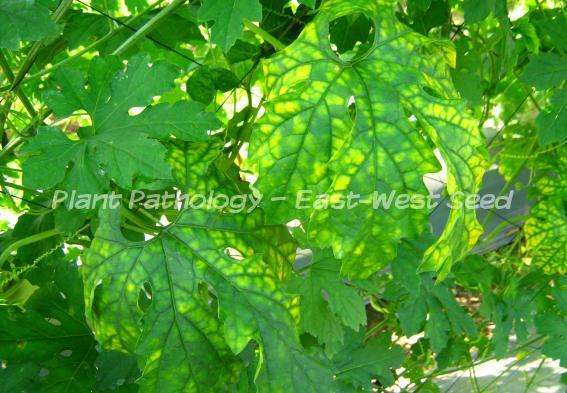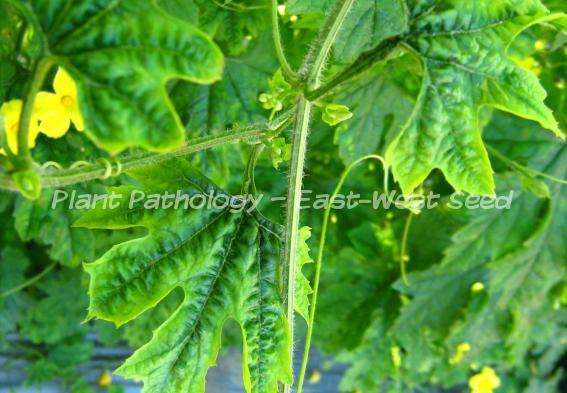Causal Agent:
Polerovirus (Cucurbit aphid-borne yellows virus or CABYV)
| Characteristic Symptoms: | |
 |
Initial symptoms include leaf wrinkling, downward cupping and mild yellow patches in older leaves. |
 |
Eventually, affected leaves become thick and dark green in color with shiny appearance. |
 |
Young leaves show interveinal chlorosis and extreme reduction in size. |
 |
In severe cases, plants become stunted and may not bear fruit due to the reduction of the number of female flowers produced. |
| Transmission and Spread: | |
 |
The virus is spread in a persistent manner by 2 aphid species, Aphis gossypii and Myzus persicae and by grafting.
|
 |
The virus infects other cucurbits (cucumber, watermelon, pumpkin) and weed species that serve as alternate hosts/virus reservoirs.
|
 |
The virus is not transmitted by seeds or by mechanical means.
|
| Management and Control: | |
 |
Use resistant/moderately resistant varieties (e.g. hybrid bittergourd Galactica).
|
 |
Use virus-free seedlings.
|
 |
Remove infected plants as early as virus symptoms are observed to prevent/minimize spread of the virus by aphids.
|
 |
Remove weeds that serve as alternate hosts/virus reservoirs.
|
 |
Control/minimize aphid population by using plastic mulch, yellow sticky traps and/or use of insecticides such as azadirachtin (neem), cartap hydrochloride (e.g. PadanⓇ, Barena 50 SP, Gemtrak®), acetamiprid (e.g. MospilanⓇ), acephate (e.g. AcetamⓇ, CompeteⓇ), chlorphenapyr (e.g. Kotetsu) or penthoate (e.g. PennantⓇ, VidexⓇ).
and acephate (e.g. Compete®) |
To view other diseases, click here.
Need more help? Ask the Doctor.










